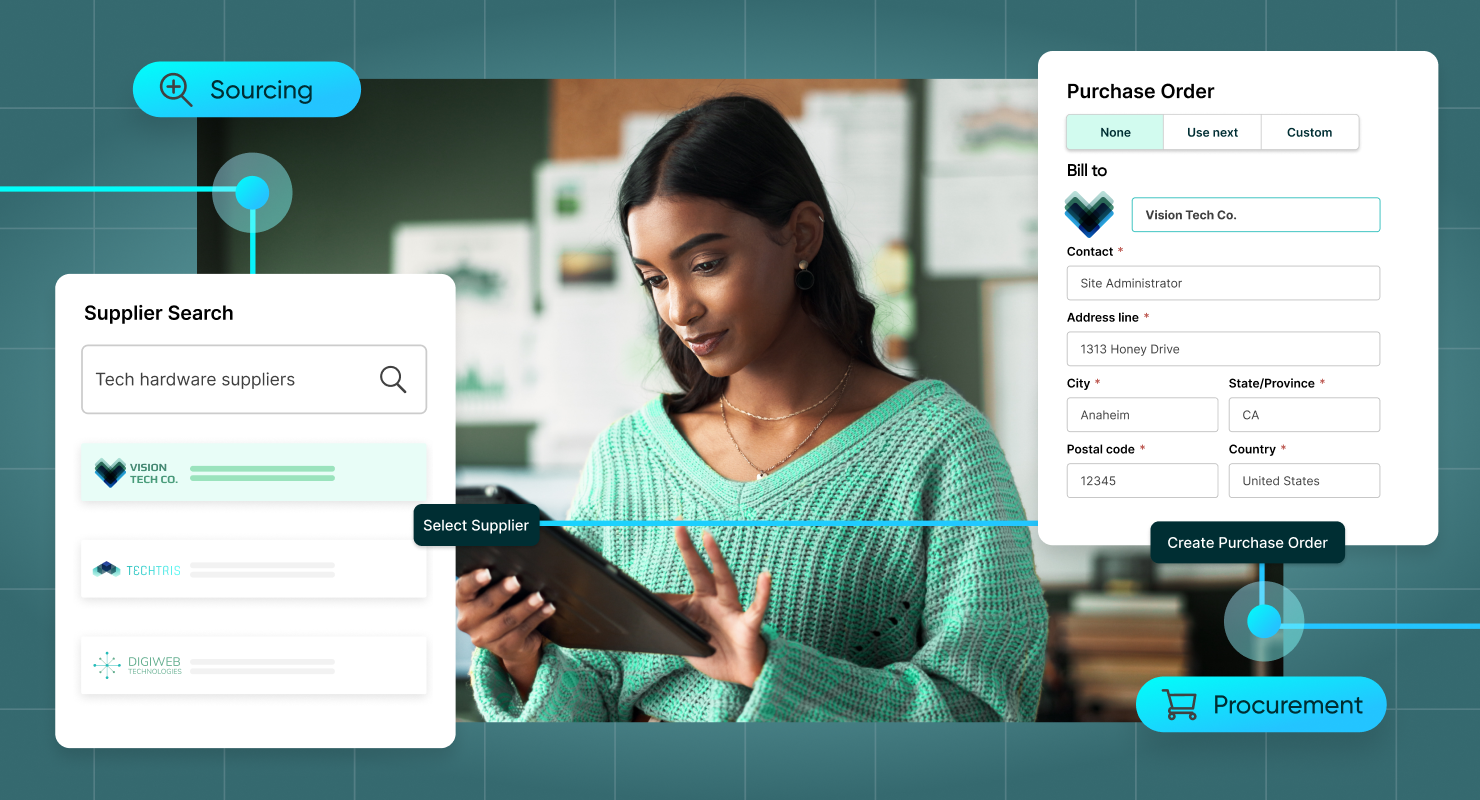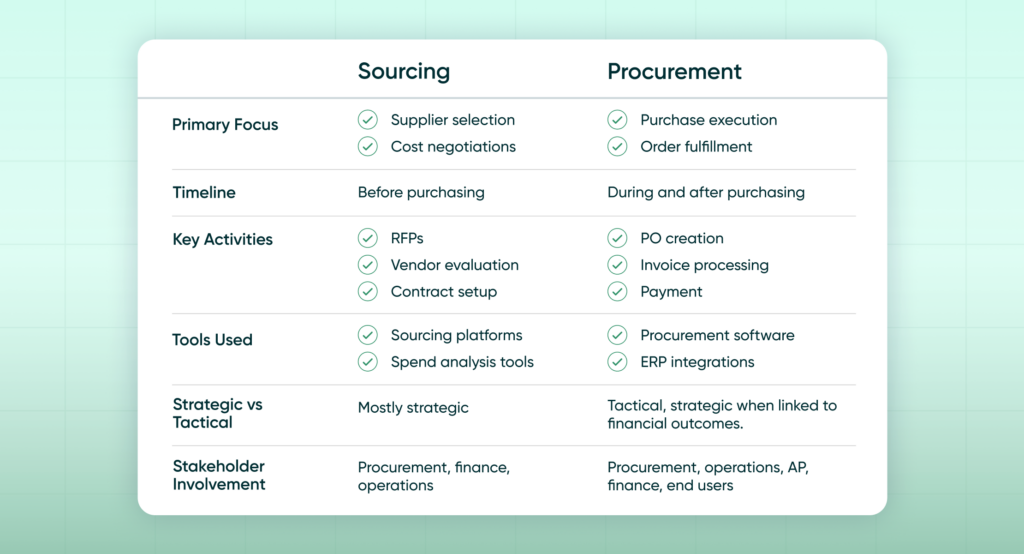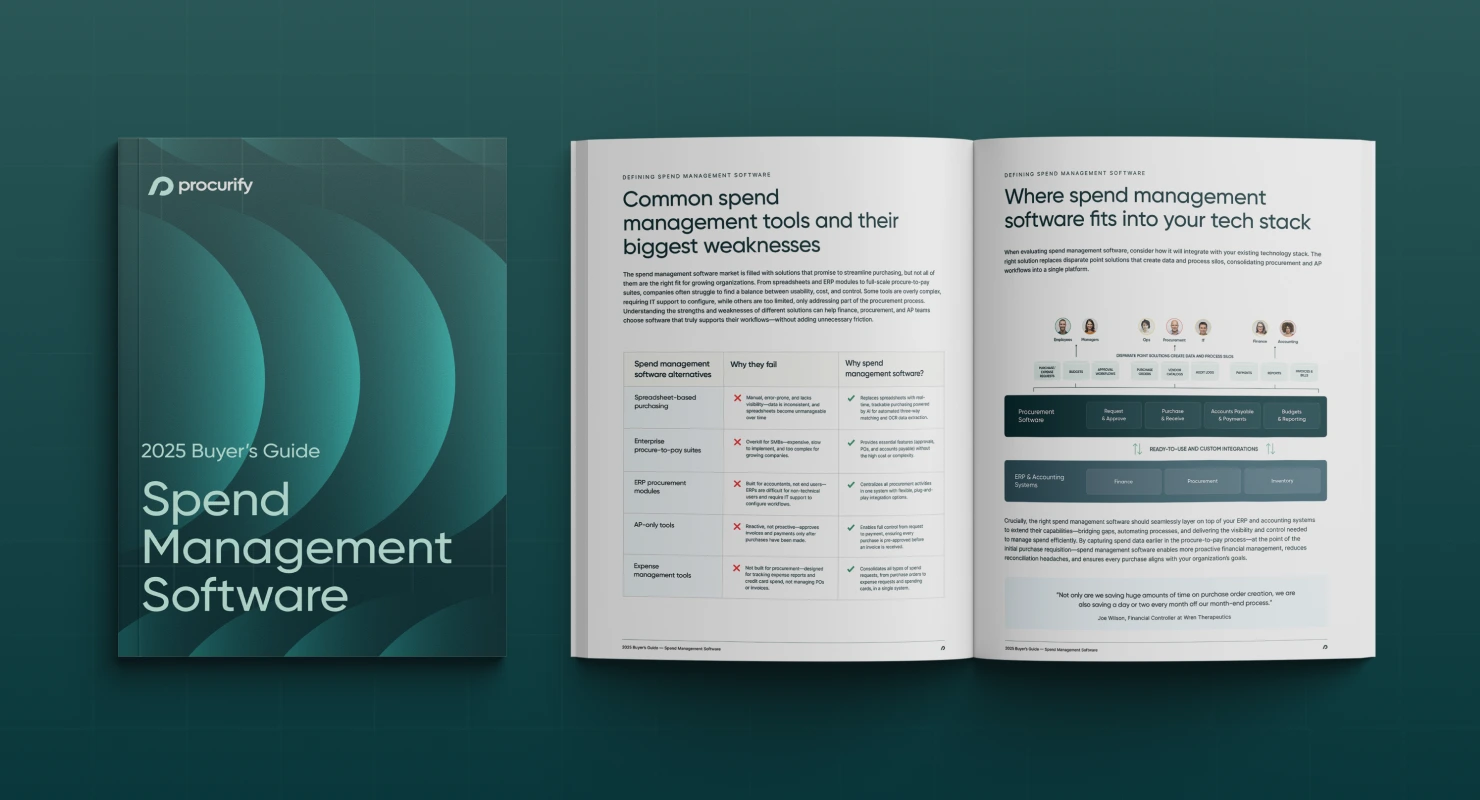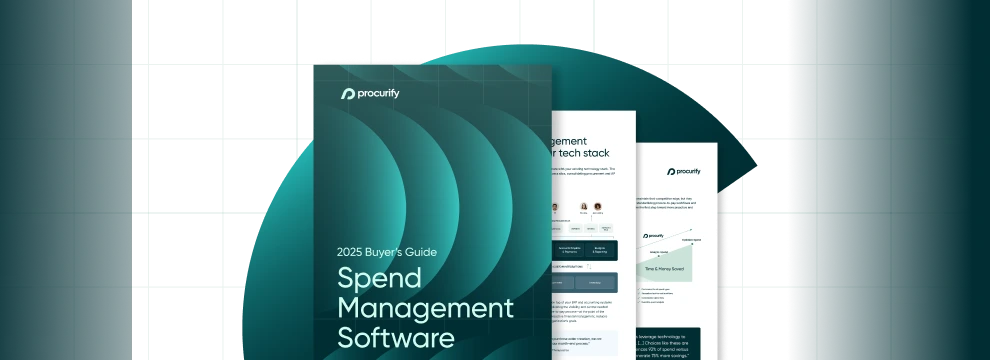
Sourcing vs Procurement: Stop Confusing These Critical Supply Chain Roles
Sourcing and procurement are often used interchangeably in supply chain and purchasing conversations, but treating them as the same thing can lead to strategic missteps. While both are essential to acquiring goods and services, they play distinct roles within the procurement lifecycle, each with its own priorities and impact.
Understanding the difference between sourcing and procurement matters. It’s essential for managing supplier relationships, controlling spend, and driving operational efficiency. Whether you’re a CFO optimizing financial workflows, a supply chain manager focused on cost savings, or a procurement professional looking to improve best practices, knowing how these functions differ can make a real impact.
This article will explain the core definitions and activities of sourcing and procurement, how they differ in function, scope, and strategic value, and why distinguishing between them is crucial for organizational success. We’ll also cover when to prioritize one over the other to help you build smarter, more effective procurement processes.
What is sourcing?
Sourcing refers to the process of identifying, evaluating, and selecting suppliers of goods and services. As the front-end of the procurement lifecycle, sourcing is focused on finding the right suppliers at the right price and under the best conditions. The process typically involves several key activities, including supplier identification and market research, issuing requests for proposals (RFPs) and information (RFIs), and conducting price and contract negotiations. Once a supplier is selected, sourcing also encompasses supplier qualification, onboarding, risk analysis, and cost modeling. These activities lay the groundwork for building long-term vendor partnerships and ensuring cost-effective purchasing.
Strategic vs. tactical sourcing
Sourcing can be approached in two ways: strategic or tactical.
Strategic sourcing is a data-driven, long-term approach that focuses on optimizing the supplier base, reducing the total cost of ownership, and creating value. It usually involves spend analysis, category management, cross-functional stakeholder involvement, and the use of supplier scorecards for performance evaluation.
On the other hand, tactical sourcing is more short-term and transactional, often addressing immediate business needs or spot purchases. While strategic sourcing is about long-term value, tactical sourcing focuses on quick, practical solutions.
What is procurement?
Procurement is the end-to-end process of acquiring goods and services. It covers everything from issuing purchase orders to receiving deliveries and making payments. This process is execution-oriented, focusing on ensuring compliance with contracts negotiated during the sourcing phase.
Core procurement activities include purchase requisition and approval, creating purchase orders (POs), tracking orders and receiving goods, processing invoices and payments, and maintaining compliance through accurate recordkeeping. These steps ensure that procurement operations align with strategic sourcing agreements while maintaining consistency and accountability throughout the acquisition process.
Direct vs. indirect procurement
Procurement can be classified into two main categories: direct and indirect.
Direct procurement involves acquiring raw materials, components, or goods that are directly linked to production or service delivery.
In contrast, indirect procurement covers operational needs, such as office supplies, software, or facility services. Each category requires distinct approval workflows, vendor strategies, and impact assessments, reflecting their different roles within the organization.
Operational procurement workflows
Modern procurement teams increasingly rely on digital systems to streamline repetitive tasks and improve visibility. These systems often include procurement software that integrates with ERP solutions like NetSuite or Sage Intacct. With customizable workflows for approvals and PO creation, these tools enable real-time budget tracking and spend reporting.
Additionally, accuracy is maintained through processes like three-way matching, which involves cross-referencing the purchase order, invoice, and receipt. By leveraging technology, procurement teams can reduce manual effort and enhance accuracy, ensuring more efficient and transparent operations.
Sourcing vs procurement: a side-by-side comparison

Sourcing vs procurement: Why the distinction matters
By recognizing where sourcing ends and procurement begins, companies can create specialized roles and workflows that align with their strategic goals. This clarity enables finance and procurement leaders to allocate resources effectively, hire the right talent, and streamline processes to reduce errors and speed up cycle times.
When teams understand the distinct functions of sourcing and procurement, they can collaborate more effectively, reducing overlap and confusion. This results in smoother cross-functional workflows and a more agile approach to spend management.
Ultimately, leveraging the strengths of both sourcing and procurement allows organizations to build resilient supply chains, minimize financial risks, and maintain operational consistency. Getting this right is key to driving both cost efficiency and strategic success.
When to focus on sourcing vs procurement
The focus on sourcing or procurement depends on the organization’s size, growth stage, and industry. Startups and scaling companies usually prioritize procurement to manage immediate purchases and operational needs. As spending grows, strategic sourcing becomes crucial for reducing costs and formalizing vendor relationships, helping maintain financial efficiency.
In larger enterprises and the public sector, strategic sourcing becomes more important to optimize the supplier base and ensure compliance. With higher transaction volumes, procurement often becomes automated through ERP and procure-to-pay (P2P) platforms like Procurify to maintain consistency and accuracy.
The focus also varies by industry. In manufacturing, sourcing ensures reliable raw materials and price stability, while procurement supports timely delivery. In healthcare, sourcing secures quality-compliant medical supplies, with procurement managing fulfillment. In education, sourcing helps negotiate bulk contracts for resources, while procurement ensures timely acquisition. For non-profits, sourcing focuses on cost-effective or donated items, while procurement manages compliance and efficient use of resources.
By understanding when to emphasize sourcing versus procurement, organizations can align their strategies with their unique operational needs and industry demands, leading to more resilient and efficient supply chains.
Separate roles, stronger results
Managing sourcing and procurement effectively means more than just knowing the difference—it’s about using each function strategically to optimize your supply chain.
By clearly defining roles and aligning them with your goals, your team can reduce costs, strengthen supplier relationships, and stay agile in a changing business landscape. Taking the time to get this right today sets the foundation for long-term success.

2025 Spend Management Software Buyer’s Guide
Choose the spend management solution best suited to your organization’s needs with an overview of the 2025 software ecosystem, feature comparisons, and a free vendor capability evaluation checklist.
